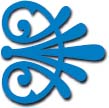CHAPTER 7 SUPPLEMENT B

The Economic Order Quantity Model
The concept of economic order quantity (EOQ) applies to inventory items that are replenished in batches or orders and are not produced and delivered continuously. Although we have identified a number of costs associated with inventory decisions in the chapter, only two categories, carrying cost and ordering cost, are considered in the basic EOQ model. Shortage costs and opportunity costs are not relevant because shortages and changes in capacity should not occur if demand is constant, as we assume in this basic case. The cost of the goods is considered to be fixed and, hence, does not alter the decisions as to when inventory should be reordered or how much should be ordered.
More specifically, we assume the following in the basic EOQ model:
- Rate of demand is constant (e.g., 50 units per day).
- Shortages are not allowed.
- Lead times are known with certainty, so stock replenishment can be scheduled to arrive exactly when the inventory drops to zero.
- Purchase price, ordering cost, and per-unit holding cost are independent of quantity ordered.
- Items are ordered independently of each other.
Let us consider a water distributor that sells 1000 5-gallon bottles per month (30 days) and purchases in quantities of 2000 bottles per order. Lead time for the receipt of an order is six days. The cost accounting department has analyzed ...
Get Operations Management for MBAs, 5th Edition now with the O’Reilly learning platform.
O’Reilly members experience books, live events, courses curated by job role, and more from O’Reilly and nearly 200 top publishers.

